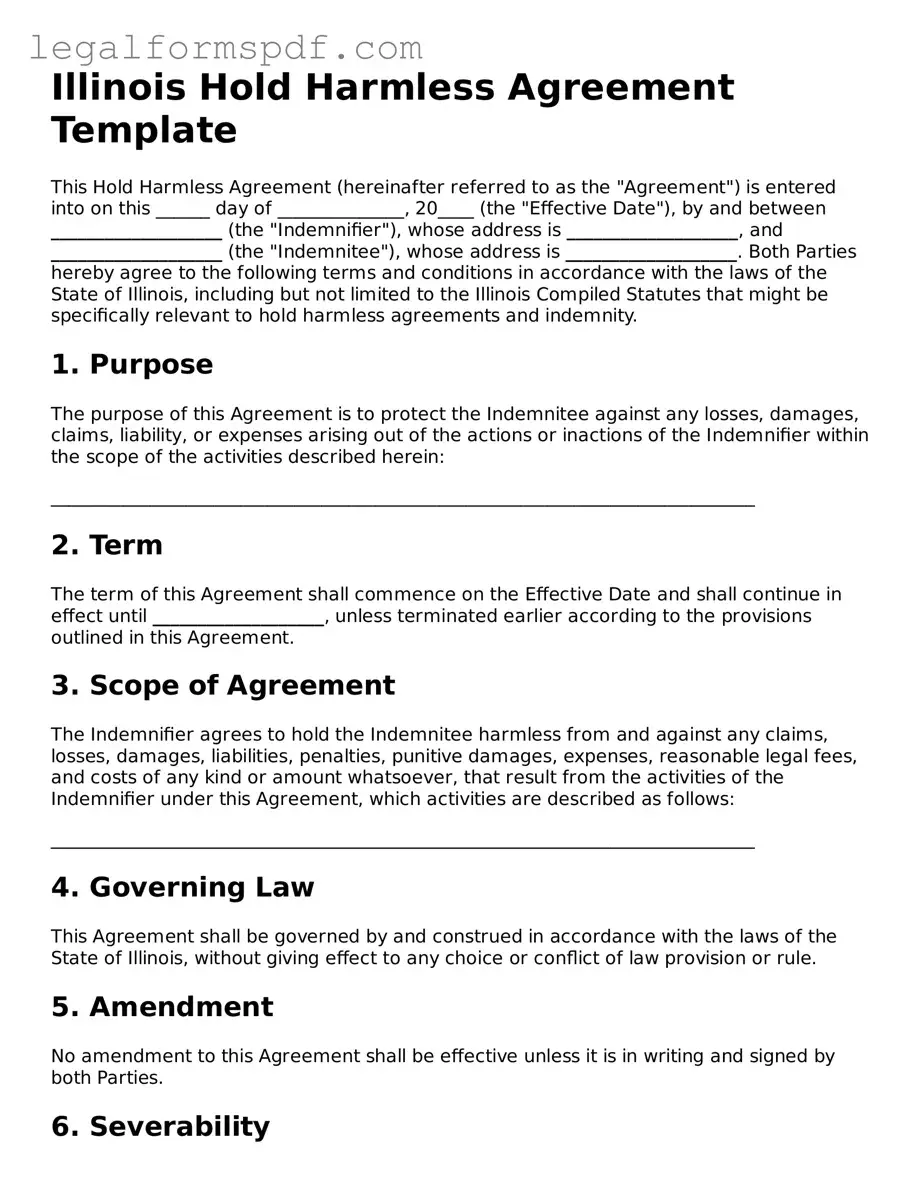Illinois Hold Harmless Agreement Template
This Hold Harmless Agreement (hereinafter referred to as the "Agreement") is entered into on this ______ day of ______________, 20____ (the "Effective Date"), by and between ___________________ (the "Indemnifier"), whose address is ___________________, and ___________________ (the "Indemnitee"), whose address is ___________________. Both Parties hereby agree to the following terms and conditions in accordance with the laws of the State of Illinois, including but not limited to the Illinois Compiled Statutes that might be specifically relevant to hold harmless agreements and indemnity.
1. Purpose
The purpose of this Agreement is to protect the Indemnitee against any losses, damages, claims, liability, or expenses arising out of the actions or inactions of the Indemnifier within the scope of the activities described herein:
______________________________________________________________________________
2. Term
The term of this Agreement shall commence on the Effective Date and shall continue in effect until ___________________, unless terminated earlier according to the provisions outlined in this Agreement.
3. Scope of Agreement
The Indemnifier agrees to hold the Indemnitee harmless from and against any claims, losses, damages, liabilities, penalties, punitive damages, expenses, reasonable legal fees, and costs of any kind or amount whatsoever, that result from the activities of the Indemnifier under this Agreement, which activities are described as follows:
______________________________________________________________________________
4. Governing Law
This Agreement shall be governed by and construed in accordance with the laws of the State of Illinois, without giving effect to any choice or conflict of law provision or rule.
5. Amendment
No amendment to this Agreement shall be effective unless it is in writing and signed by both Parties.
6. Severability
If any term, clause, or provision of this Agreement is held invalid or unenforceable, such invalidity shall not affect any other term, clause, or provision of this Agreement, and such invalid term, clause, or provision shall be deemed to be severed from this Agreement.
7. Entire Agreement
This Agreement represents the entire agreement between the Parties regarding the subject matter hereof and supersedes all prior agreements, whether written or oral.
8. Signatures
Both Parties hereto agree to the terms and conditions set forth in this Agreement and hereby sign their names as a demonstration of their agreement:
Indemnifier:
_________________________________________________
Signature
_________________________________________________
Date
Indemnitee:
_________________________________________________
Signature
_________________________________________________
Date
